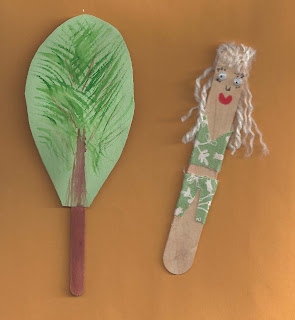Brush Print
Assemble tempera and/or watercolor paints, paper and brushes. Dip various size dry brushes in paint and dab on the paper to make brush prints.
Sponge Prints
Materials needed for sponge printmaking: sponges of various shapes, tempera paint and construction paper. Dry or damp sponges can be used for varying effects. Dip sponges in paint and press on paper. Notice the effects of the first sponge print and the latter ones loaded with more paint.
Watercolor Finger and Brush Prints
Materials needed: watercolors, brushes and watercolor paper. Lightly moisten watercolors and place fingers in the paint. Dab fingers on the paper for a variety of shapes, such as animals. Brushes can be used to add details.
Variety Prints
Materials needed: Construction paper, tempera paint, watercolors, ink pads and a variety of objects to make prints. Print making items are numerous and can include: fabric, feathers, bubble wrap, rubber bands, etc.
Glue Print
Spread white non-toxic glue over an object. Press to a piece of construction paper. Remove the object and sprinkle glitter,colored sand, dried coffee grounds, etc. over the glue. Let dry.
Holiday Turkey
Place a child's hand on a piece of paper. Encourage children to trace around their hands. Ask the child where the head, feathers and feet might be. Feathers can be colored with crayons, chalk, markers, etc. Cut the tips of the feathers lengthwise with scissors for a feathery look. Glue the turkey on another piece of paper.






















